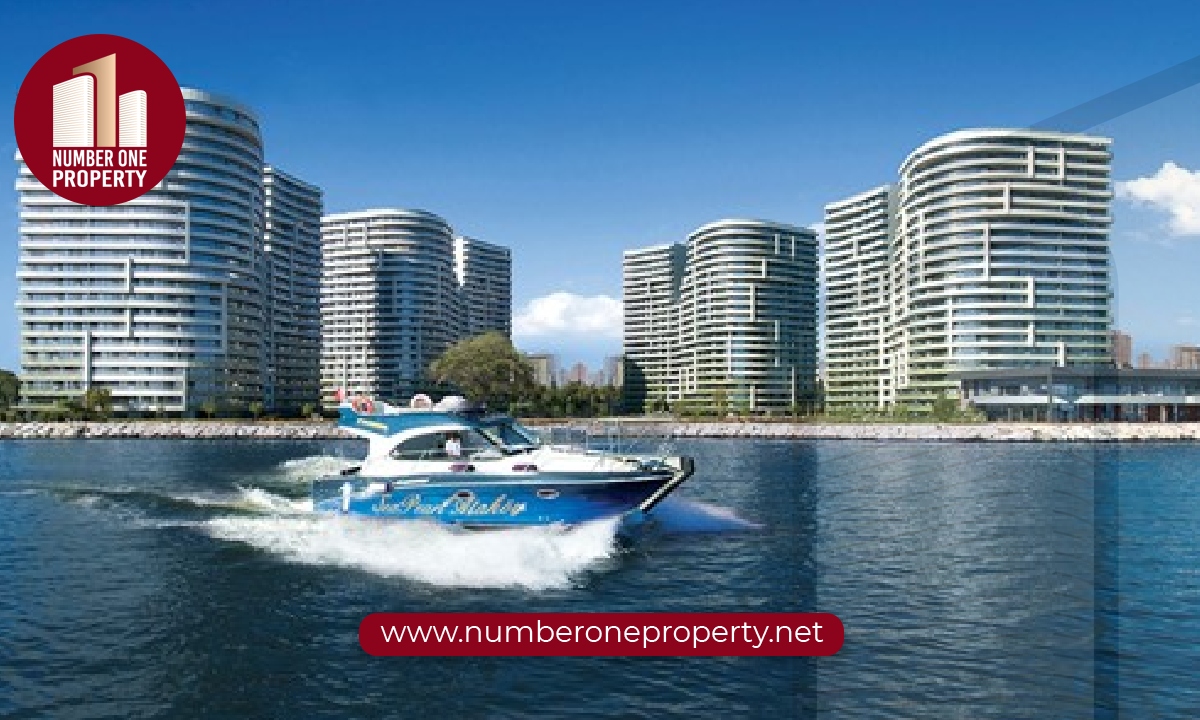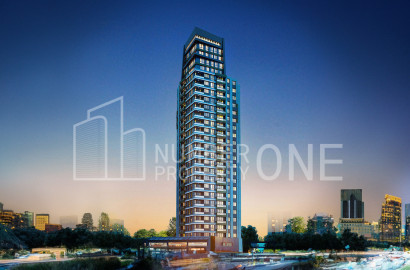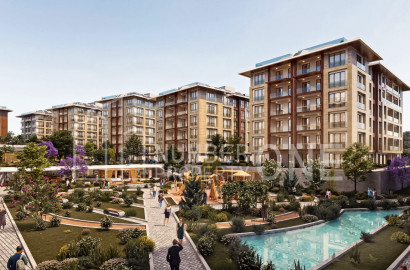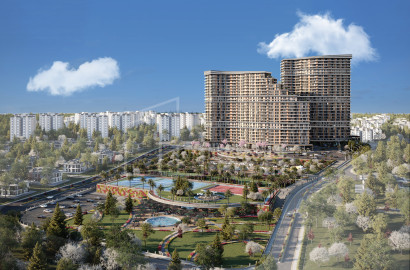Waterfront properties have always been attractive, with breathtaking views, direct water access, and a unique lifestyle. But beyond their aesthetic and recreational benefits, they are also significant economic assets.
These developments can influence and drive the real estate market, offering a promising outlook for economic growth.
This article explores how waterfront development projects contribute to real estate value appreciation, the challenges such properties may face, and the sustainable practices that can mitigate these issues.
The Appeal of Waterfront Properties
Waterfront real estate is valuable because it provides a peaceful environment that reduces stress and promotes relaxation.
Living by the water is frequently thought of as being exclusive and rich. In addition to peace, quiet, and excellence, waterfront homes provide a sense of retreat from the busyness of city life. They offer the chance to live a luxurious lifestyle defined by leisurely walks along the shore, dining on the waterfront, and engaging in water sports.
Waterfront properties are more than just picturesque views; they are lifestyle choices. Waterfront living isn't just about scenic beauty and high investment returns; it's also linked to numerous health and wellness benefits.
Living on the waterfront property gives a special kind of calm and energy. There is no comparison for the amazing sensation of peace and natural beauty from the peaceful sight of curves waves, sparkling waterways, and wide horizons.
Defining Waterfront Property:
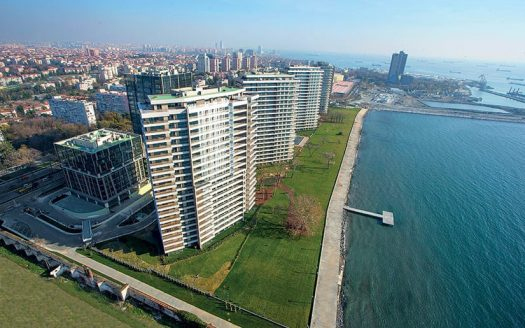
Properties located on the banks of rivers, lakes, seas, or oceans are known as waterfront properties, and they have a certain appeal that makes them stand out in the real estate market. These desirable houses have several benefits that add to their appeal and drive people to go after them.
Waterfront properties consist of various homes located next to bodies of water. Each home offers a special combination of leisure activities, peace, and scenic surroundings. Waterfront living offers luxury, leisure, and closeness to the natural world, whether in a secluded seaside community or a busy urban center.
Waterfront Living and Lifestyle:
Waterfront properties offer more than just a stunning view; they provide unique opportunities for community engagement and a lifestyle deeply connected with nature.
Waterfront living typically promises serene views, recreational activities like boating and fishing, and an overall peaceful environment away from the hustle and bustle of urban development. Also, waterfront developments may provide Direct access to leisure facilities like marinas, golf courses, and waterfront parks.
Various facilities and recreational opportunities that improve living conditions are found via waterfront properties.
Economic Impact of Waterfront Development
Waterfront properties have significant positive economic benefits because they boost local companies and create jobs. They are also often popular tourist destinations.
Investing in waterfront projects can boost market value, improve infrastructure, and regenerate neighborhoods.
Successful waterfront development can stimulate economic growth, enhance community resilience, and create vibrant, sustainable environments for businesses and residents.
Stimulating Local Economies:
Waterfront properties are more than just residential projects; they are critical to comprehensive communities that often include vibrant mixed-use spaces with retail, dining, and recreational facilities.
This multipurpose approach serves residents, attracts tourists, and supports local businesses, stimulating economic growth in the local area with higher property values.
In low-income or neglected areas, waterfront development projects often spark community revitalization efforts, transforming dilapidated regions into thriving waterfront districts.
Employment Creation:
A varied workforce, comprising architects, engineers, construction workers, hospitality personnel, retail employees, and service providers, is needed to develop and maintain waterfront projects. As a result, more job opportunities and lower unemployment rates stimulate the local economy.
Boosted Revenue from Tourism:
Waterfront projects draw travelers and tourists, which raises the amount of money spent on lodging, dining, shopping, entertainment, and leisure activities. Visitor spending funds local company expansion, employment creation, and tax revenue generation for the town.
Facilities for Culture and Activity:
Establishing waterfront properties opens the possibility of developing cultural and recreational facilities such as green spaces, open areas, waterfront pathways, marinas, and cultural landmarks. These facilities raise the area's allure, encourage community involvement, and improve locals' quality of life in general.
Real Estate Market Dynamics:
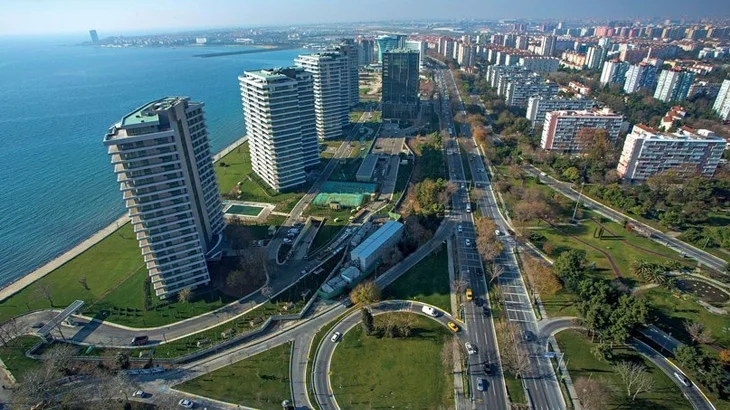
Waterfront properties generally command higher market values than their landlocked counterparts. The desirability of waterfront access in real estate transactions can significantly elevate a property’s worth.
Consequently, waterfront developments often stimulate economic growth and increase property values for individual homes and regions.
Investment and Development Trends:
Investors and developers recognize the high rental demand associated with waterfront properties. These areas are prime examples of lucrative real estate investments, often yielding substantial returns due to their unique location and the premium lifestyles they offer.
Another important reason that makes waterfront properties more valuable is the scarcity of waterfront land suited for development, Which increases the market value of this type of real estate development over time.
Challenges Facing Waterfront Properties
Waterfront properties are attractive, but they come with many responsibilities, such as dangers associated with climate change, environmental concerns, and laws and regulations.
Waterfront property taxes are sometimes higher than those of other properties. Waterfront properties are worth more than double the value of other homes —but this higher value comes with higher taxes, maintenance, and insurance costs.
Environmental Considerations:
Waterfront development projects must carefully consider their environmental impact. Coastal and riverside habitats can be fragile, and development can lead to erosion, habitat loss, and pollution if not managed correctly.
Implementing sustainable practices is crucial to minimize these impacts.
Climate Change and Extreme Weather Events:
Climate change-related rising sea levels raise the possibility of flooding and coastal erosion, endangering infrastructure and waterfront buildings. Developers must evaluate the possible outcomes of sea level rise and take appropriate action to safeguard against flooding. This may involve building seawalls, raising buildings, or implementing green infrastructure solutions.
Hurricanes, flooding, and storms are examples of extreme weather events that can result in wave heights and flooding in coastal areas, which can cause disruption and property damage. To reduce the chance of damage, developers must create structures and infrastructure that can resist harsh weather and implement flood mitigation measures.
Coastal erosion is a risk factor for waterfront developments because it can cause loss of land and structural instability. To maintain shorelines and prevent erosion, developers may need to implement erosion control measures, such as beach replenishment, dune restoration, and vegetation planting.
Regulatory and Zoning Issues:
Local regulations and zoning laws issued by local authorities play a critical role in waterfront development. These regulations ensure that growth is sustainable, does not harm the environment, and serves the community's best interests. Navigating these laws can be complex and is crucial for successful project approval and implementation.
Depending on the jurisdiction, developers who plan to undertake waterfront development projects must obtain permits and approvals from appropriate local, state, and federal agencies. These permissions may include dredging permits, waterway permits, shoreline development permits, and environmental impact assessments.
Coastal districts have specialized land use rules and zoning laws to control growth, minimize erosion, and safeguard the coastal environment. These regulations may include setback requirements, height restrictions, and instructions for maintaining native nature and sand systems.
Waterfront regions typically contain historic structures, archeological work sites, and cultural landmarks that require preservation. Developers must comply with historic preservation requirements and obtain permission for proposed modifications or alterations to historic properties.
To ensure the natural beauty and ecological balance of waterfront areas, there are building restrictions that developers must understand. These restrictions may limit future renovations or expansions, and it is important to know the local regulations and zoning laws.
Sustainable Practices in Waterfront Development
The waterfront real estate industry is starting to consider sustainability more and more.
Reducing the negative environmental effects of the real estate development industry requires a combination of green building methods, energy-efficient design, and sensitive land management.
Innovative Building Techniques:
Modern waterfront developments increasingly use innovative construction methods to address sustainability and environmental impact. These include building above flood levels, using materials resistant to mold and corrosion, and incorporating green infrastructure like rain gardens and permeable pavements.
Rainwater runoff can be better managed, erosion decreased, and water quality enhanced through green infrastructure features like covered shorelines, rain gardens, permeable pavements, and green roofs.
Community-Oriented Design:
Sustainable waterfront development also focuses on creating spaces that enhance the local community. This includes public access to waterfronts, parks, and community centers that are integrated into the development, ensuring that the benefits of waterfront projects extend beyond the property owners to the broader public.
Acknowledging and preserving waterfront areas' historical and cultural significance strengthens community identity and sense of place.
Developing waterfront communities incorporating resilience and sustainability concepts into community-oriented design can endure environmental difficulties and adapt to changing conditions.
Economic Resilience:
Developing waterfront areas with a combination of residential, commercial, and recreational spaces can help minimize the economic impact of environmental changes by diversifying the local economy and providing multiple sources of income. This approach can also help maintain property values even in fluctuating market conditions.
Creating a welcoming environment for local businesses, startups, and entrepreneurs is crucial for promoting economic growth and stability in coastal areas—waterfront projects.
Using waterfront regions' scenic charm and recreational offerings to draw tourists and visitors can help strengthen the local economy in the tourism and hospitality sector.
The Rising Tide of Waterfront Development and Real Estate in Istanbul
Istanbul is renowned for its profound historical significance. Vibrant waterfront developments dot its extensive coastline along the Bosphorus, the Sea of Marmara, and the Black Sea. As these waterfront areas evolve, they profoundly impact the city’s real estate values, reshaping Istanbul’s economic and cultural landscape.
Istanbul is experiencing a sharp increase in the demand for premium real estate. The picturesque vistas and the possibility of abundant living that come with waterfront homes make them extremely desirable.
The Allure of Waterfront Living in Istanbul
Living on Istanbul's waterfront property attracts smart inhabitants and clever investors, offering a way of life that promotes the city's rich history, panoramic beauty, and urban allure.
Waterfront Real Estate as a Prime Investment:
Waterfront property in Istanbul represents some of the most coveted real estate in the city. From luxurious apartments in Bebek and villas along the Bosphorus strait to modern developments in Kadıköy and Ataköy, these properties offer stunning views, a prestigious address, and a unique lifestyle attractive to domestic and international buyers.
Lifestyle Benefits:
Istanbul's waterfront homes offer amazing views of the Marmara Sea, Black Sea, and Bosphorus Strait.
The appeal of waterfront property in Istanbul is undeniable. Residents enjoy proximity to the water, ease of access to yacht clubs, seafood restaurants, and promenades that are perfect for strolls with picturesque views. These lifestyle perks significantly contribute to the premium pricing of properties in these locales.
Economic Impact of Waterfront Development in Istanbul
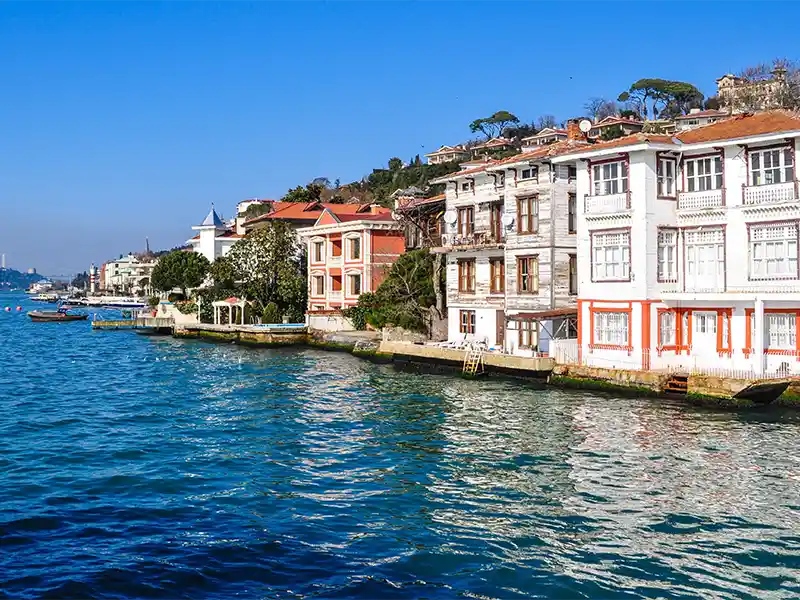
Istanbul's waterfront properties are essential to the city's economic growth, investment, and quality of life, contributing to its growing reputation as a major city and economic power worldwide.
Boost to Property Values:
Waterfront properties are critical drivers of property value increases in Istanbul. The demand for waterfront property typically far exceeds supply, driving up property prices in direct waterfront locations and adjacent areas. This trend is reflected in the overall uplift in the real estate market in neighborhoods close to significant waterfront projects.
Tourism Gross Revenue:
Every year, millions of visitors flock to Istanbul's waterfront attractions, which include entertainment centers, historic sites, and waterfront walkways. Waterfront development increases the city's tourism attraction. Developments like the Galataport project are prime examples of projects designed to improve the neighborhood by bringing in additional restaurants and cafes and attracting visitors.
Job Creation:
Job subsequent generations facilitated by waterfront improvements in several industries, including construction, hotel, retail, and services. Large-scale projects require a diverse workforce, which decreases unemployment rates and increases economic activity. This workforce includes laborers, engineers, architects, and hotel personnel.
Stimulation of Local Economies:
Beyond their impact on real estate values, waterfront projects in Istanbul also stimulate local economies. Increased values and economic activity in waterfront development translate into higher tax revenues for the government. Municipalities can allocate these funds to finance public services, infrastructure projects, education, healthcare, and other essential services, thereby enhancing the quality of life for residents citywide.
Waterfront real estate projects often require significant investments in public areas, utilities, transit networks, and recreational facilities.
Looking to the Future
Throughout history, Istanbul's waterfronts have been hubs of activity, commerce, and cultural exchange, attracting traders, travelers, and residents worldwide. Today, waterfront development projects in Istanbul continue to build upon this rich legacy, creating vibrant, inclusive, and resilient communities that embrace the city's past while embracing its future as a global metropolis.
The future of waterfront real estate in Istanbul looks promising, with several large-scale projects on the horizon aimed at transforming the city’s coastline. These developments are enhancing the urban fabric of Istanbul and setting new standards in luxury living and environmentally conscious construction.
Waterfront development in Istanbul continues to play a pivotal role in shaping the city’s real estate landscape. For investors and homebuyers, these areas offer a high return on investment and a chance to be part of a dynamically evolving community.
As Istanbul progresses, the integration of sustainability, economic viability, and community inclusivity will be vital in ensuring that its waterfront areas continue to thrive and enrich the lives of its residents for generations to come.
By focusing on these aspects, Istanbul is not just capitalizing on its geographical bounty. Still, it is also paving the way for a future where development works hand in hand with sustainability and community welfare.
191,000$

Istanbul Asia,
Kartal,

Ready

530,000$

Istanbul Europe,
Zeytinburnu,

Under construction

160,000$

Istanbul Europe,
Büyükçekmece,

Ready

Conclusion
Waterfront development offers substantial opportunities to enhance real estate values while providing communities with aesthetically pleasing and functional living spaces.
Successfully developing these areas requires carefully balancing economic ambitions with environmental stewardship and community needs. As the real estate industry evolves, waterfront properties remain a symbol of luxury and a bellwether for sustainable living and urban planning developments.
Related articles:
The Ultimate Guide for Buying a Villa in Istanbul


